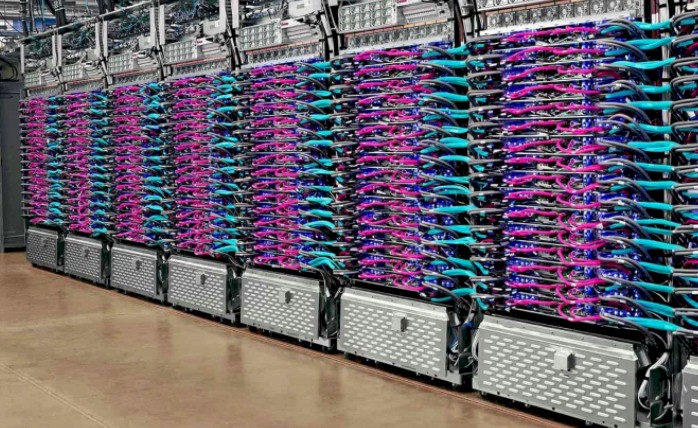Google Unveils TPU V5p Pods To Accelerate AI Training

Google revealed a performance-optimized version of its Tensor Processing Unit (TPU) called the v5p designed to reduce the time commitment associated with training large language models.
The chip builds on the TPU v5e announced earlier this year. But while that chip was billed as Google's most "cost-efficient" AI accelerator, its TPU v5p is designed to push more FLOPS and scale to even larger clusters.
Google has relied on its custom TPUs, which are essentially just big matrix math accelerators, for several years now to power the growing number of machine learning features baked into its web products like Gmail, Google Maps, and YouTube. More recently, however, Google has started opening its TPUs up to the public to run AI training and inference jobs.
According to Google the TPU v5p is its most powerful yet, capable of pushing 459 teraFLOPS of bfloat16 performance or 918 teraOPS of Int8. This is backed by 95GB of high bandwidth memory capable of transferring data at a speed of 2.76 TB/s.
As many as 8,960 v5p accelerators can be coupled together in a single pod using Google's 600 GB/s inter-chip interconnect to train models faster or at greater precision. For reference, that's 35x larger than was possible with the TPU v5e and more than twice as large as possible on TPU v4.
Google claims the new accelerator can train popular large language models like OpenAI's 175 billion parameter GPT3 1.9x faster using BF16 and up to 2.8x faster than its older TPU v4 parts — if you're willing to drop floating point for 8-bit integer calculations.
This greater performance and scalability does come at a cost. Each TPU v5p accelerator will run you $4.20 an hour, compared to $3.22 a hour for TPU v4 or $1.20 a hour for TPU v5e. So if you're not in a rush to train or refine your model, Google's efficiency-focus v5e chips still offer better bang for your buck.
- EU running in circles trying to get AI Act out the door
- IBM takes a crack at 'utility scale' quantum processing with Heron processor
- Creating a single AI-generated image needs as much power as charging your smartphone
- AWS unveils core-packed Graviton4 and beefier Trainium accelerators for AI
Along with the new hardware, Google has introduced the concept of an "AI hypercomputer." The cloud provider describes it as a supercomputing architecture that employs a close knit system of hardware, software, ML frameworks, and consumption models.
"Traditional methods often tackle demanding AI workloads through piecemeal, component-level enhancements, which can lead to inefficiencies and bottlenecks," Mark Lohmeyer, VP of Google's compute and ML infrastructure division, explained in a blog post Wednesday. "In contrast, AI hypercomputer employs system-level codesign to boost efficiency and productivity across AI training, tuning, and serving."
In other words, a hypercomputer is a system in which any variable, hardware or software, that could lead to performance inefficiencies is controlled and optimized for.
Google's new hardware and AI supercomputing architecture debuted alongside Gemini, a multi-modal large language model capable of handling text, images, video, audio, and code.
OnlyFans Under The Microscope: Addressing Concerns Over Child Safety
Concerns Over Child SafetyOnlyFans' ResponseRegulatory ActionsCollaborative EffortsFuture DirectionsConclusion Read more
The AI Arms Race: Big Tech's Bid For Dominance In Artificial Intelligence
In the rapidly evolving landscape of technology, the race for dominance in artificial intelligence (AI) has intensified ... Read more
Decoding The Impact Of OpenAI's Sora Video Model On Industries And Jobs
In the realm of artificial intelligence, OpenAI's Sora video model stands out as a groundbreaking innovation, promising ... Read more
Apple Poaches Top Talent From Google To Strengthen AI Team
As artificial intelligence (AI) continues to shape the future of technology, companies are intensifying their efforts to... Read more
Meta's Bold Move: How Chatbots Are Reshaping The Tech Landscape
In a strategic pivot that has sent ripples across the tech industry, Meta has embarked on a bold journey into the realm ... Read more
The Power Of AI: Microsoft's Cloud Sales Reach New Heights
In the ever-evolving landscape of technology, Microsoft has emerged as a frontrunner, leveraging the transformative powe... Read more

